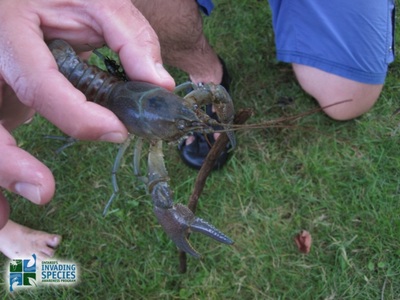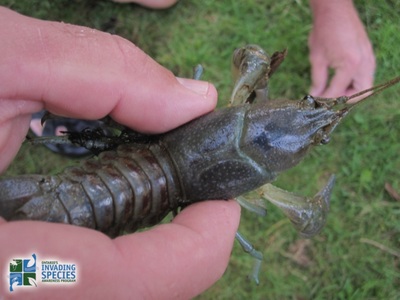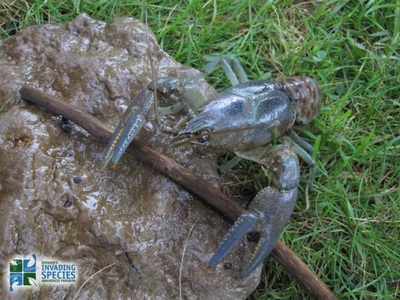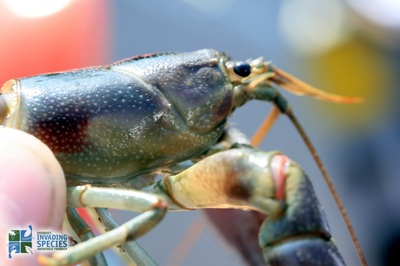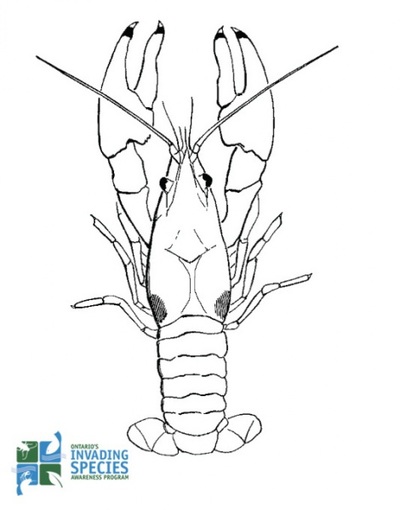Rusty Crayfish
|
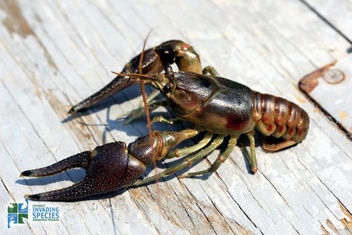
Rusty crayfish are large, aggressive crayfish native to the Ohio River Basin in the United States. The species was likely introduced to Ontario by anglers from other areas discarding crayfish they were using as bait. Rusty crayfish may also have been put in lakes or rivers by people who acquired them as pets or through the scientific supply trade.
Rusty crayfish are commonly found in lakes, rivers, ponds and streams with clay, silt and gravel bottoms that contain rocks, logs or debris the crayfish can hide under. They eat large amounts of aquatic vegetation and their aggressive nature helps protect them from being eaten by native fish. Females can carry up to 200 fertilized eggs under their tails, enabling a single female introduced to a new area to start a new population. Once rusty crayfish are established, there is currently no practical way to permanently remove them.
Rusty crayfish are commonly found in lakes, rivers, ponds and streams with clay, silt and gravel bottoms that contain rocks, logs or debris the crayfish can hide under. They eat large amounts of aquatic vegetation and their aggressive nature helps protect them from being eaten by native fish. Females can carry up to 200 fertilized eggs under their tails, enabling a single female introduced to a new area to start a new population. Once rusty crayfish are established, there is currently no practical way to permanently remove them.
Range
|
The first Ontario sighting of rusty crayfish was in the early 1960s in the Kawartha Lakes region. They are now found throughout much of south-central and southeastern Ontario, including Manitoulin Island, the Magnetawan River, the Kawartha Lakes Basin and the Ottawa River Basin, and in northwestern Ontario. Outside their native range in the Ohio River Basin, rusty crayfish have also spread to the midwestern and northeastern United States.
Click here for the Early Detection & Distribution Mapping System (EDDMapS) to view and contribute to Rusty Crayfish sightings in Ontario. |
Impacts of Rusty Crayfish
|
The rusty crayfish's large size, aggressive eating habits and rapid spread have had serious impacts on native species.
|
How to Identify Rusty Crayfish |
|
What You Can Do |
|
OFAH/OMNR Invading Species Awareness Program. (2012). Rusty Crayfish. Retrieved from:http://www.invadingspecies.com. This factsheet may be reproduced for non-commercial purposes.

